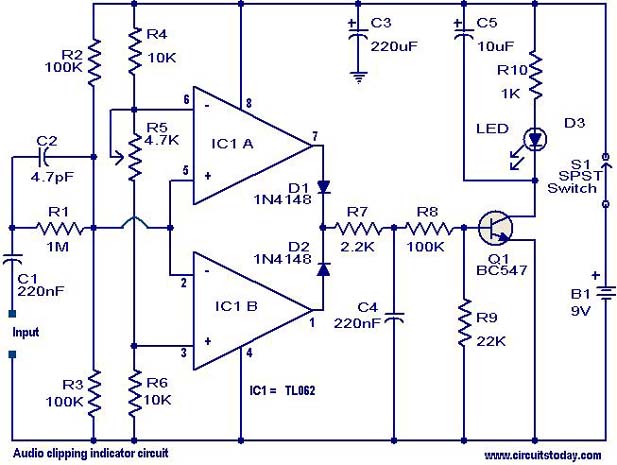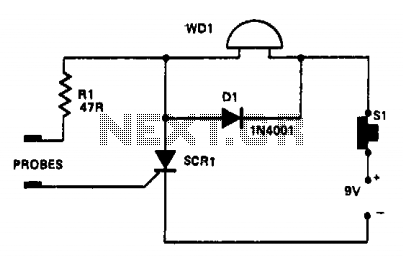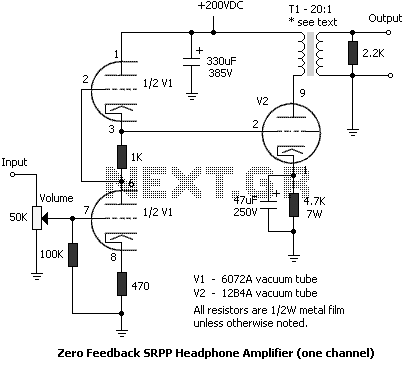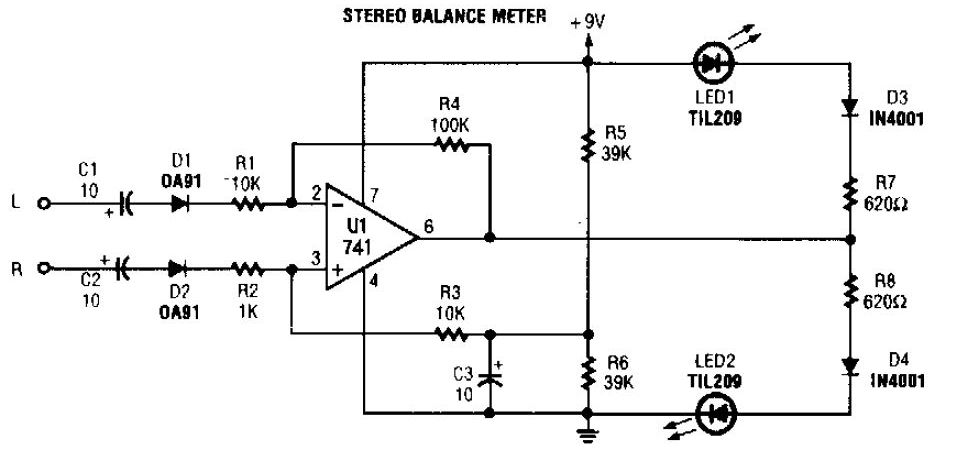
Zero center indicator for FM receivers
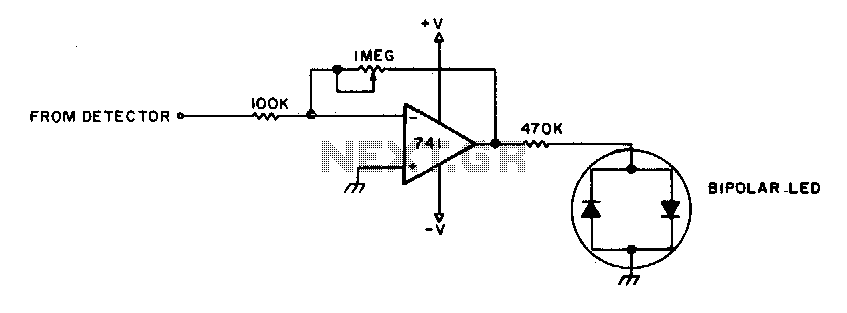
To adjust, tune into a station and adjust the I"M pot for a null. Then ask the station to modulate and fine-tune so modulation peaks do not light the LEDs. Stations are properly tuned when neither LED is lit.
The circuit described involves a tuning mechanism for receiving radio signals, specifically focusing on achieving a null condition for optimal reception. The "I'M pot" refers to an adjustable potentiometer used for fine-tuning the input signal. The process begins by tuning into the desired radio station and adjusting the potentiometer until a null point is reached, where the output signal is minimized or balanced.
Once the null condition is established, the station is requested to modulate. This modulation is likely a test signal that varies in amplitude or frequency to ensure the receiver's response is appropriate. The fine-tuning process is critical; it involves adjusting the potentiometer further to ensure that modulation peaks do not activate the LEDs. The LEDs serve as indicators of signal strength or modulation presence. Therefore, the goal is to achieve a state where neither LED is illuminated, which indicates that the station is properly tuned and the receiver is optimally configured to handle the incoming signal without distortion or overload.
In summary, the tuning procedure is essential for ensuring clear reception of radio signals while avoiding false indications from the LEDs, which would suggest improper tuning or excessive modulation. Proper adjustment of the I"M pot is crucial in achieving this balance, leading to an effective and efficient radio communication system.To adjust, tune in a station and adjust the I"M pot for a null. Then ask the station to modulate and fine adjust so modulation peaks don"t light the LEDs Stations are properly tuned when neither LED is lit. 🔗 External reference
The circuit described involves a tuning mechanism for receiving radio signals, specifically focusing on achieving a null condition for optimal reception. The "I'M pot" refers to an adjustable potentiometer used for fine-tuning the input signal. The process begins by tuning into the desired radio station and adjusting the potentiometer until a null point is reached, where the output signal is minimized or balanced.
Once the null condition is established, the station is requested to modulate. This modulation is likely a test signal that varies in amplitude or frequency to ensure the receiver's response is appropriate. The fine-tuning process is critical; it involves adjusting the potentiometer further to ensure that modulation peaks do not activate the LEDs. The LEDs serve as indicators of signal strength or modulation presence. Therefore, the goal is to achieve a state where neither LED is illuminated, which indicates that the station is properly tuned and the receiver is optimally configured to handle the incoming signal without distortion or overload.
In summary, the tuning procedure is essential for ensuring clear reception of radio signals while avoiding false indications from the LEDs, which would suggest improper tuning or excessive modulation. Proper adjustment of the I"M pot is crucial in achieving this balance, leading to an effective and efficient radio communication system.To adjust, tune in a station and adjust the I"M pot for a null. Then ask the station to modulate and fine adjust so modulation peaks don"t light the LEDs Stations are properly tuned when neither LED is lit. 🔗 External reference
Warning: include(partials/cookie-banner.php): Failed to open stream: Permission denied in /var/www/html/nextgr/view-circuit.php on line 713
Warning: include(): Failed opening 'partials/cookie-banner.php' for inclusion (include_path='.:/usr/share/php') in /var/www/html/nextgr/view-circuit.php on line 713
